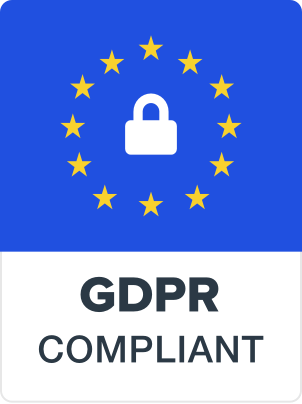Your Digital Marketing Audit: The Ultimate Guide

December 29 , 2022
An organization’s marketing actions and efforts on digital marketing channels are listed in a business document called a digital marketing audit, which is typically a presentation. Instead of outlining strategy or plans, it focuses more on the execution and results. Key data from a digital marketing audit can be used to design or assess a digital marketing strategy. It can uncover opportunities, such as new channels, or give information on the performance and actions of competitors.
The Purpose of a Digital Marketing Audit

You are essentially operating in the dark without a digital marketing audit. Without a solid grasp of your success indicators on each digital channel, it can be challenging to define KPIs that are both attainable and reasonable. Across owned, paid, and earned activities, this is applicable. Once these performance measurements have been defined, you can evaluate them historically and against other industries to spot patterns. Knowing this information will allow you to move forward with a data-driven strategy.
Typically, a digital marketing audit comes before “getting things done.” A digital audit can outline the business case supported by data insight, whether you want to develop a new website, activate a new marketing channel, or optimise what you’re producing.
There are several potential client-side triggers for performing a digital marketing auditing report. Some of the most well-liked are as follows;
- The beginning of the year or a quarter, fresh budgets, and pre- and post-campaign
- New management, new hires, and reorganised teams and divisions are structural changes.
- Performance: Modification of the main performance goals
- Strategy: a shift in the strategic course
- Relationships: Starting a new job at a new agency and agency evaluation
How Is A Digital Marketing Audit Carried Out?

A detective’s mindset is the ideal one for carrying out a digital marketing audit. Cast a wide net at first, follow the trails carefully, and turn no stone untouched. The audit must be thorough and inquisitive. You’ll be continuously gathering information, proof, and examples that illustrate the organization’s digital footprint as part of the audit.
Every digital marketing channel that the company uses should be audited, along with the performance of all content, paid and organic, owned assets, competitor performance, channel-specific trends, and areas for improvement. The following factors should be taken into account while performing a digital marketing audit:
-
You’ll Require A Lot of Time
It will take many hours to thoroughly complete the audit process. Most businesses allow two weeks for turnaround. It’s crucial that everyone agrees on the procedure you will follow and that you all agree on vocabulary and emphasis if you chose to divide the task among several persons (for instance, by channel). It’s preferable to collaborate on a document using Google Slides or Google Docs so that everyone can observe how each other’s audit work develops over time.
-
The Scope

The audit must be determined in agreement with your customer. A typical marketing audit has a 12-month time frame. The audit dates may be set to coincide with the fiscal year or the calendar year. In this manner, a trigger is established for a subsequent audit to be carried out (for example a rolling annual audit).
-
Data Storage
You’ll need a place to store all of your file assets, including screenshots, CSV data, and other outputs. Options include Google Drive, Dropbox, or Box. It would be preferable if this were cloud-based as opposed to being saved locally, especially when working with others.
-
Presentation

The majority of marketers develop the audit in the presentation format rather than utilising a note-taking software and then transferring to the presentation. Presentation: Google Slides, PowerPoint, Canva, or another presentation tool. The presentation’s Appendix section should also contain all of the notes.
-
Account Access
In order to effectively audit all digital channels, you’ll need access to owned profiles and accounts that you can log into (see the next section for a breakdown of the most popular accounts). When the customer doesn’t have complete access themselves or in the beginning of the relationship, this might occasionally be difficult to organise. You won’t be able to get a complete picture without full access to every account.
-
Tools
The best practise tools for completing the audit for each digital marketing channel are outlined in this guide’s section on tools. Although they are not required, they will assist automate the display of data and insights, save you countless hours of manual labour, and decrease the possibility of mistakes.
Setting up Account Access

Make sure you have access to the required profiles and accounts before you begin. This could not be simple, depending on your client. Some major organisations struggle to find all of their logins or, worse still, may not even have complete visibility over all of the platforms and software they use because of poor digital governance. You must help your client locate and access accounts if you find yourself in this predicament.
The next step is to create a list of all the accounts you require access to so that your client may arrange for access to be granted all at once. It’s preferable for them to add access for you via email whenever possible rather than disclosing login information. You’ll often require access to the accounts and profiles listed below;
- Website; a CMS such as WordPress
- Shopify or alternative e-Commerce/billing platforms for online stores.
- Google Analytics, Google Tag Manager, Google Data Studio, Mixpanel, and any other analytics programmes the customer employs for website tracking.
- SEO includes SEOptimer, Google Search Console, and Google My Business, among other SEO software programmes.
- SEM; Microsoft Advertising and Google Ads (Bing Ads)
- Social media platforms include Facebook Business Manager, Instagram, YouTube, Twitter, LinkedIn, and any other platforms the client uses.
- Display advertising and other ad channels; Influencer marketplaces like Tribe, Programmatic platforms like AdRoll, Native platforms like Outbrain, and Affiliate platforms like Commission Factory.
- ESPs like Mailchimp, Campaign Monitor, or others for email marketing. According to Statista, revenue from email marketing was 7.5 billion dollars in 2020; by 2023, it is expected to surpass the 10-billion-dollar milestone.
Conclusion
Building on the conclusions and insights from the digital audit, a digital marketing strategy. It should be modular and divided into phases so that work can be moved ahead or backward as necessary. Each task on the roadmap must result in a result that fulfils a recommendation informed by a crucial audit insight. If you are looking for marketing and site auditing app, get in touch with UrAudits.
Copyright © 2024 Uraudits.com. All Rights Reserved. Privacy Policy | Legal | Terms of Use
Privacy Overview
| Cookie | Duration | Description |
|---|---|---|
| cookielawinfo-checbox-analytics | 11 months | This cookie is set by GDPR Cookie Consent plugin. The cookie is used to store the user consent for the cookies in the category "Analytics". |
| cookielawinfo-checbox-functional | 11 months | The cookie is set by GDPR cookie consent to record the user consent for the cookies in the category "Functional". |
| cookielawinfo-checbox-others | 11 months | This cookie is set by GDPR Cookie Consent plugin. The cookie is used to store the user consent for the cookies in the category "Other. |
| cookielawinfo-checkbox-necessary | 11 months | This cookie is set by GDPR Cookie Consent plugin. The cookies is used to store the user consent for the cookies in the category "Necessary". |
| cookielawinfo-checkbox-performance | 11 months | This cookie is set by GDPR Cookie Consent plugin. The cookie is used to store the user consent for the cookies in the category "Performance". |
| viewed_cookie_policy | 11 months | The cookie is set by the GDPR Cookie Consent plugin and is used to store whether or not user has consented to the use of cookies. It does not store any personal data. |









